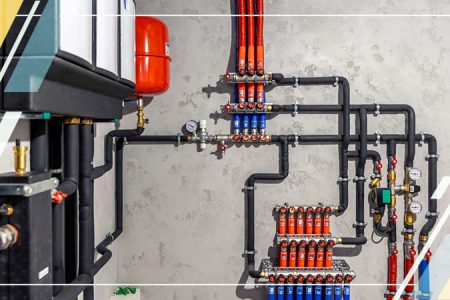In today’s rapidly advancing world, the demand for safe and efficient electrical installations has become an alarming issue. Also, with the increasing complexity of electrical systems, the need for proper organization and protection of wiring has become a pressing concern. Without a reliable solution, exposed electrical wires pose a significant risk of damage, accidents, and even fire hazards. Fortunately, the introduction of electrical conduits has revolutionized the way we handle electrical installations. This article discusses an overview of conduit, mechanism of action, benefits, challenges, and more.
What is an Electrical Conduit?
Electrical conduit serves as a protective pathway for electrical wiring within buildings or structures, shielding it from potential damage. It’s a crucial element in construction, coming in different materials like metal, plastic, fiber, or clay. Electricians install these conduits at the site to safeguard wires and ensure the safety of anyone near them. Essentially, it is used to keep both the wiring and people safe.
What are the Different Types of Electric Conduits?
Electric conduit comes in various types, each tailored to specific needs and environments. Here’s an overview of some common types:
Metal Electrical Conduits:
- Rigid Metal Conduit (RMC): Comprising heavyweight galvanized steel and installed with threaded fittings, RMC stands out for its strength and durability. While it offers excellent protection, it’s among the pricier options due to material and labor costs. Some variations use aluminum with additional coatings for enhanced corrosion resistance.
- Galvanized Rigid Steel (GRC): Made of steel, GRC is suitable for indoor and outdoor applications and is commonly found in industrial and commercial settings. It boasts impressive impact resistance, UV stability, and protection against electromagnetic interference (EMI). However, its weight and handling difficulties contribute to higher installation costs and susceptibility to corrosion.
- Intermediate Metal Conduit (IMC): Similar to RMC but lighter, IMC is rated for outdoor use and offers a cost-effective alternative. It comes in threaded or unthreaded variants and features thinner walls, accommodating more wires. However, it’s more prone to kinking and is limited to smaller trade sizes compared to other conduits.
- Electrical Metallic Tubing (EMT): Thin-walled and unthreaded, EMT is typically coated steel used in commercial, industrial, and residential applications. It’s an alternative to GRC, offering easy bending but less protection. Common trade sizes range from 0.5 to 1.5 inches.
Non-Metal Electrical Conduits:
- Rigid Nonmetallic Conduit (RNC): Available in materials like high-density polyethylene, PVC, and fiberglass, RNC is smooth-walled and unthreaded. Several types are approved for underground use.
- RTRC Conduit: Made of reinforced thermosetting resin (fiberglass), RTRC conduit offers high flexural strength, corrosion resistance, and temperature resistance. It’s lightweight, easy to install, and cost-effective.
- PVC Conduit: Light and threaded, PVC is widely used for non-metallic applications. It’s affordable but not suitable for direct sunlight due to poor UV stability. PVC requires careful mounting to accommodate thermal expansion.
- Electrical Nonmetallic Tubing (ENT): Corrugated and flame-retardant, ENT is flexible and easy to bend by hand. It’s commonly used indoors and within concrete blocks, available in PVC up to 2 inches.
What Type of Conduit is Electrical Wire?
Electrical wiring is typically housed in either metal or nonmetallic conduit. Metal conduit, such as rigid metallic conduit (RMC) or intermediate metal conduit (IMC), is frequently utilized in commercial settings, offering robust protection against wiring damage. It’s commonly employed for straight-wire runs in areas like attics, garages, basements, or crawlspaces.
Nonmetallic conduit, often constructed from PVC, provides an alternative for electrical wiring needs. This type is commonly used in outdoor residential applications. Varieties of nonmetallic conduit include blue electrical nonmetal tubing (ENT) for indoor use and flexible nonmetallic tubing for outdoor installations.
How Does Electrical Conduit Function?
Electrical conduit functions by providing essential protection for homes and buildings against the risk of electrocution. Typically, conduits facilitate the safe transmission of current by allowing various wires to run through the same pipe. They are essential whenever wiring is manually installed for electricity or during home re-wiring projects.
Before employing a conduit, it’s imperative to adhere to building codes and regulations, as there are specific rules governing conduit installation. Conduits are constructed from various materials such as fiber, metal, plastic, or fired clay, chosen based on specific requirements. Engineers or electricians install these conduits at the site of electrical equipment installation to ensure safety and compliance with regulations.
How to Choose the Right Electrical Conduit?
Choosing the right electrical conduit involves considering a range of factors beyond just size and type. While National Electrical Code (NEC) guidelines, local codes, and engineering specifications play a crucial role, there are several key characteristics to keep in mind:
- Cable Fault: Ensuring the conduit protects against cable faults and electrical hazards.
- Toxicity: Selecting non-toxic materials, especially in applications where human exposure is possible.
- Weight: Considering the weight of the conduit, especially for overhead installations.
- Durability: Opt for conduits that are sturdy and long-lasting, capable of withstanding environmental factors and physical stress.
- Temperature Range: Choosing conduits that can operate within the required temperature range without degradation.
- Support Spans: Ensuring proper support spans to prevent sagging or damage.
- Burn-through: Selecting conduits resistant to burn-through, especially in high-temperature environments.
- Coefficient of Friction: Considering the ease of cable pulling and installation.
- Conductivity: Ensuring conduits have adequate conductivity for grounding purposes.
- Distance between Expansion Joints: Determining the spacing of expansion joints to accommodate thermal expansion.
- Material Cost: Balancing the cost of materials with performance and longevity.
- Field Handling: Considering ease of handling and installation in the field.
- Memory: Choosing conduits with minimal memory effects to facilitate bending and shaping.
- Labor Cost: Factoring in labor costs associated with installation and maintenance.
Ultimately, the ideal conduit should be durable, fire-resistant, facilitate easy cable pulling, and offer cost-effectiveness. By considering these factors comprehensively, you can ensure the chosen conduit meets the specific requirements of your project while adhering to relevant regulations and standards.
End Note
In conclusion, electrical conduit is an essential component in any electrical system, serving as a protective housing for electrical wires and cables. It plays a crucial role in ensuring the safety and efficiency of electrical installations.
By providing a secure pathway for electrical wiring, conduit helps to prevent damage and minimize the risk of electrical hazards such as short circuits, electrical fires, and electrical shocks.

